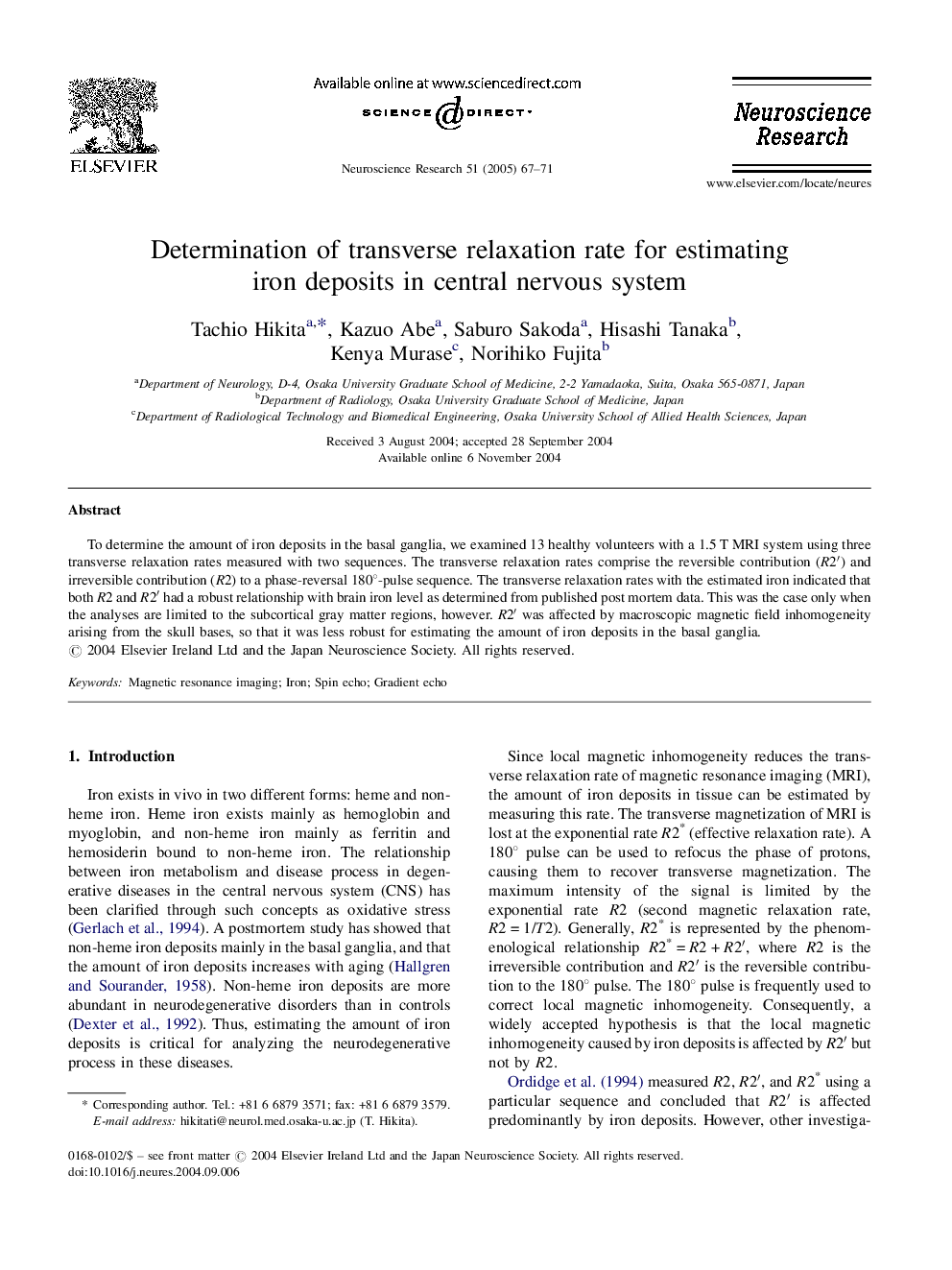| Article ID | Journal | Published Year | Pages | File Type |
|---|---|---|---|---|
| 9434458 | Neuroscience Research | 2005 | 5 Pages |
Abstract
To determine the amount of iron deposits in the basal ganglia, we examined 13 healthy volunteers with a 1.5 T MRI system using three transverse relaxation rates measured with two sequences. The transverse relaxation rates comprise the reversible contribution (R2â²) and irreversible contribution (R2) to a phase-reversal 180°-pulse sequence. The transverse relaxation rates with the estimated iron indicated that both R2 and R2â² had a robust relationship with brain iron level as determined from published post mortem data. This was the case only when the analyses are limited to the subcortical gray matter regions, however. R2â² was affected by macroscopic magnetic field inhomogeneity arising from the skull bases, so that it was less robust for estimating the amount of iron deposits in the basal ganglia.
Related Topics
Life Sciences
Neuroscience
Neuroscience (General)
Authors
Tachio Hikita, Kazuo Abe, Saburo Sakoda, Hisashi Tanaka, Kenya Murase, Norihiko Fujita,
